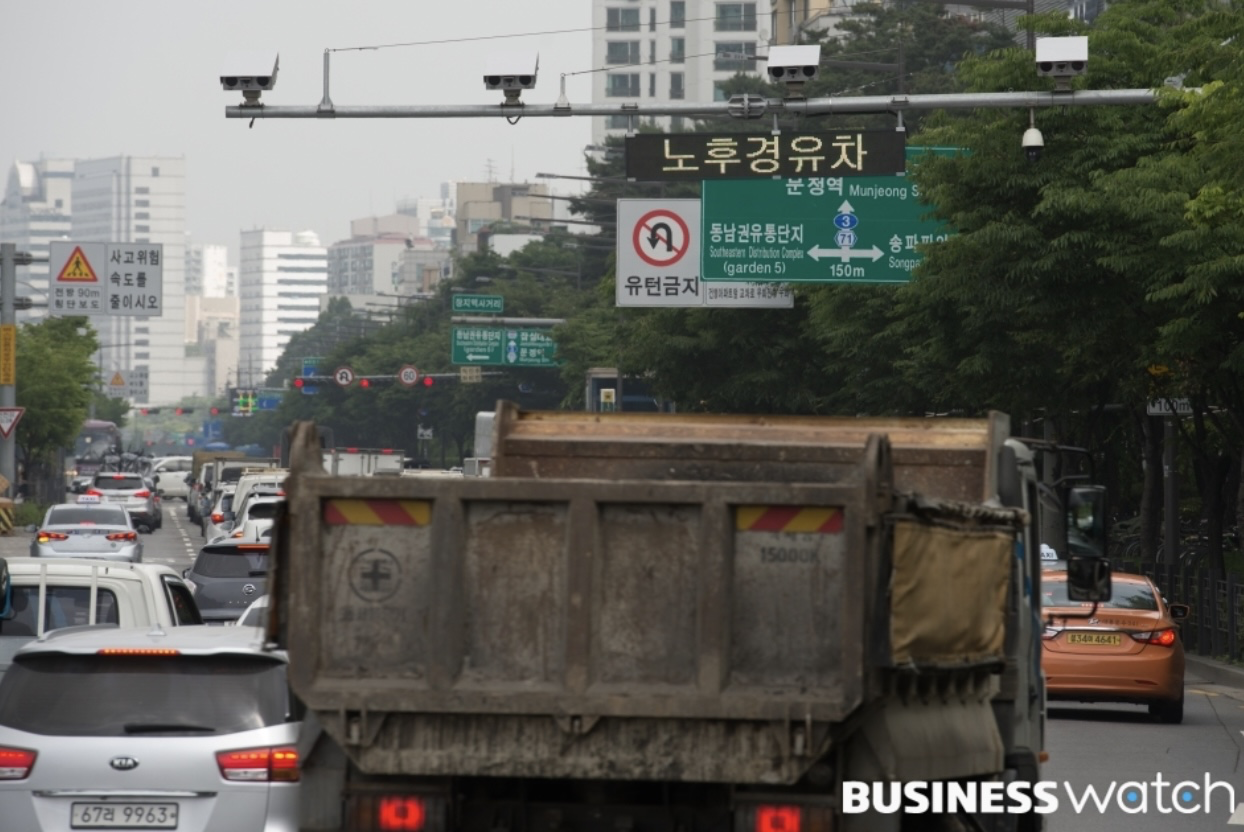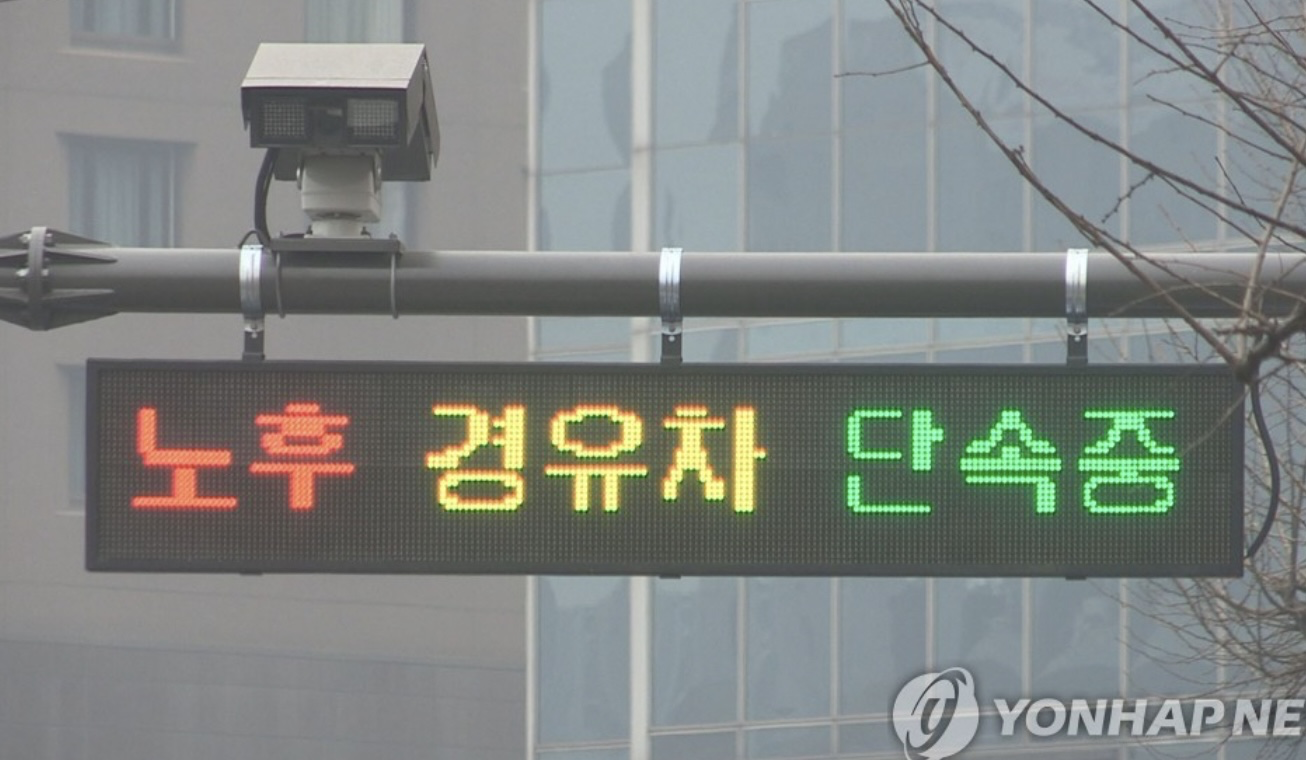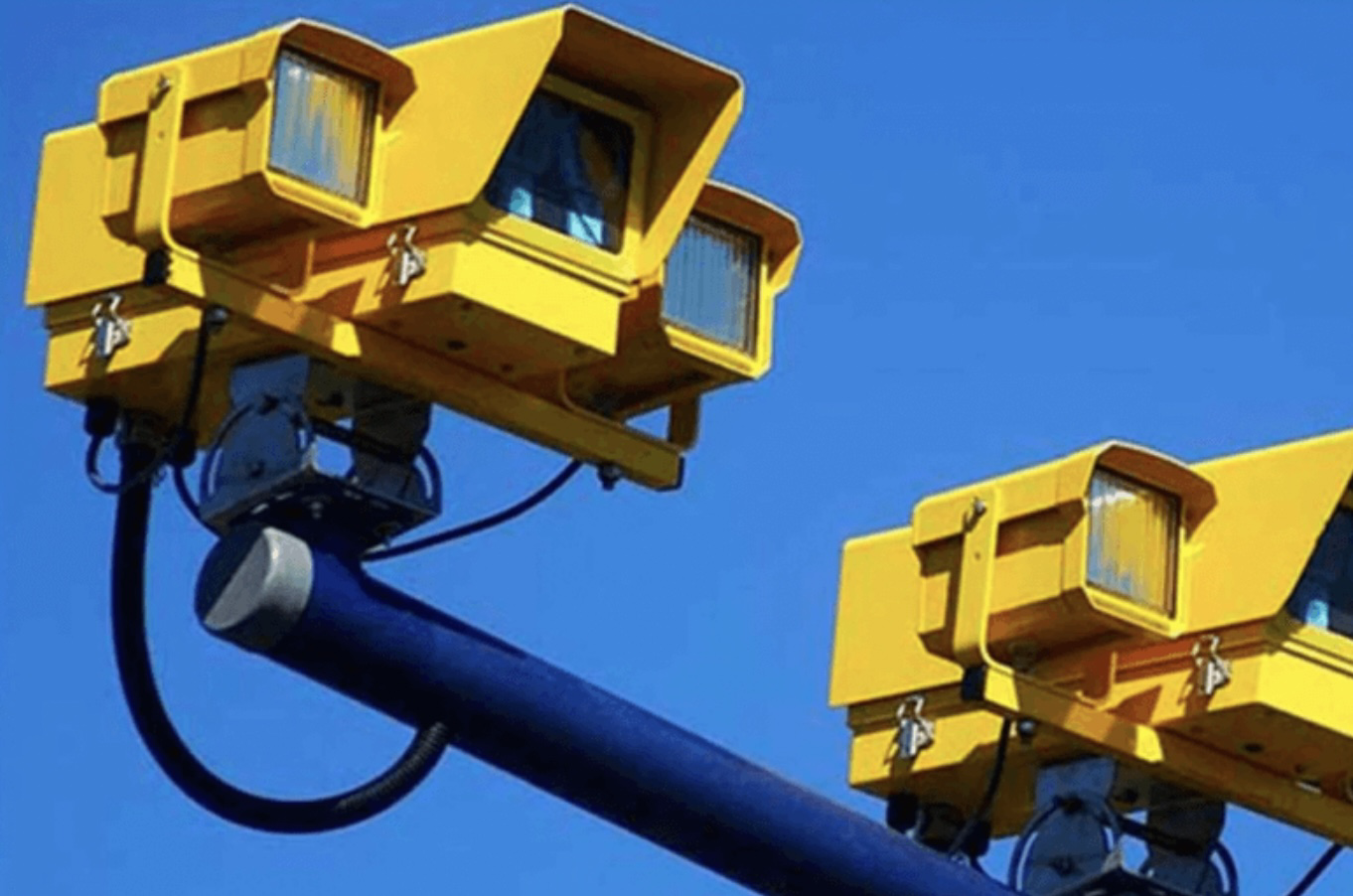Whenever I drive in Korea, I always make a mental note of just how many traffic enforcement cameras there are along my route. I don't always pay attention to them, and many times my car navigation has saved me from being fined by its loud ring sound when I'm speeding while approaching a camera.
But of course not all the cameras as speed cameras. One of the nice things about Korea is that when enforcement cams are set-up, they almost always include prominent signage about what they are checking for. It's usually not a free-for-all system where every camera is checking every violation. They often have their own purposes so in a bit of boredom last night I went browsing for some more info on these cameras and figured I'd throw together a post for anyone who me be curious about some traffic cams in Korea. This isn't an exhaustive post, but could help make you a little better informed driver if you're planning on coming to Korea and renting a car or are military personnel.
Traffic enforcement cams in Korea
 |
| Three types of speed cams: fixed, mobile box type, and sectional enforcement cams. Image: Kixx |
Above you see the three most common types of speed cameras in Korea: the fixed kind that perch up on a traffic light or pole, the mobile kind sat on the highway in a box which 99% of the time are essentially permanent but which can (when conditions require) be moved by police to other areas, and the section cams which usually operate in pairs at the start and end of a particular section of roadway that is under extra scrutiny.
 |
| Police "box" type speed cam. If you can see this, it can see you. Image: Automobile Korea |
The box type apparently use a laser cam or radar, and can measure speeders from a kilometer away and in all oncoming lanes, so good luck hiding from it.
Speed cams
 |
| Speed and red-light cam. Image: Chungcheong News |
This camera does double duty. The yellow signage on the pole along with the cam point out that this cam is checking for both red-light violations and speeding.
 |
| Children's Protection Zone signage. Image: KoRoad |
 |
| Image: Seoul News |
And because this is Korea, yes, sometimes even drones are used to enforce traffic laws.
Anti-Pollution Cameras
Maybe it's an indication of my neighborhood, but there are also a number of anti-pollution cameras, which focus on cracking down on heavy vehicles that spread fine dust or other inefficient engine vehicles that belch pollution. One of the big pushes for better air quality has been to reduce the operating times or locations of these vehicles. This enforcement may be either by special mounted cameras in key areas similar to the speed cams, or by enforcement through checking the general traffic management CCTVs. [Source]
Fines for pollution violations happen in real time, 100,000 won for first time, up to 250,000 won for repeat violations. Some, like emergency vehicles or those with registered special pollution-reducing devices, can be exempted.
 |
| Anti-pollution cams. Image: Bizwatch |
 |
| Diesel vehicle crackdown. Image: Yonhap |
 |
| Anti-pollution cam test. Image: Maeil News |
Something I was curious about, but haven't been able to find a simple answer to, is precisely how these anti-pollution cams enforce the rules. Is there some sort of AI system that can scan for exhaust plumes, or does it automatically read the license plates of heavy vehicles and if they're not registered in teh system as having had pollution-reduction devices installed, they get dinged? Or is it just a case of human traffic cam monitors in the central observation room noticing smoke pouring out of violating cars and signalling the system to fine that guy? I would be curious to know. It seems like it is still mostly a human effort, unlike with the speed cams which seem completely automated at this point. I'm also curious about the red-light violations, which are mostly automated and yet, having violated them many times without receiving fines, I wonder if they're mostly human-enforced too. If anybody can direct me to a source, I'd be very interested.
Interestingly, this article suggests that, once a speed camera is removed for any reason, it often takes at least a year or more for it to be replaced. So if you happen to notice a spot that you're sure used to have a camera there and now doesn't, I guess speed through all you want on your unofficial year-long grace period.
Lane violation cams
 |
| Image: Yonhap |
Another common type is lane violation cams. These make sure you don't drive in lanes you're not supposed to, which usually means bus lanes. Above is such a cam. Looks like any other cam, but the signage indicates that its purpose is to ensure you don't drive in a bus lane.
 |
| Image: Korea Eagle News |
The "blue lanes" on the right-side of the roadways are bus lanes.
They're sometimes hard to notice, so pay attention to the blue lane-divider lines. Aside from certain extra-busy areas, where the bus lanes are set-aside in the middle of the roadway between the two directions, most normal city streets will have them on the right and are only enforced during specific times of day (usually, rush hour). At those times you shouldn't drive in them or risk being fined. They almost always show on a sign above, and painted on the lane itself, which days/times they are enforced. Outside those days/times, you can drive in them.
Types of speed cams
There are two main types of speed cams: those that use road-embedded sensors, and those that use laser or radar measurements.
 |
| Road embedded Loop-type speed cam. Image: NewsBand |
Many of the older speed camera types function not via the actual camera itself, but by pairs of sensors installed in the roadway itself. In these situations, many people's habit of slowing down only directly in front of the camera, thinking it won't notice that you were speeding just a second ago, might not be a practical way to avoid a fine. By the time you reach the clear view of the camera for it to snap a picture of your license plate, you've likely already sped over the sensors and have triggered the snap. [Source]
 |
| Road embedded sensors in front of speed cams. Image: Macarong |
The first sensor is often between 40~60 meters in front of the camera itself, and the second sensor is 20-30 meters in front. [Source] So bear in mind that the actual sensors that measured your speed are farther ahead of, not directly at, the camera itself. The cam is there at the "end" to snap the pic of your speeding car, not to see if you are speeding at the point. Too late.
 |
| Policeman manning a mobile speed cam unit. Image: Jeju Sori |
Like back home where cops use radar guns out their patrol car window, Korean police will sometimes set up mobile cameras for cracking down on speeders too. Here's a cop manning his.
 |
| Police mobile speed cam, temporarily set up to automatically target speeders. Image: Geoje News |
But once set up, they're often left unmanned during the day. I noticed one of these out by my place the other day, and was immediately suspicious about it. Later, in my neighborhood's Naver Cafe, I noticed people talking about it, warning others.
One of the big reasons for police deploying these is a common phenomenon called "Kangaroo driving" (캥거루 운전) in which drivers will slow down at the sensors, then speed up again right after passing the camera. You know you've done this too. Some areas will install mobile speed cam units in these areas to crack down on kangaroo drivers. These mobile units are often mounted on tripods and look a little bit like surveyor equipment. If you see those out on the side of the road, don't get cocky and just slow down instead. [Source] Remember that the navi app you rely on to warn you about speed cam traps won't know about this kind.
 |
| Radar type speed cam. Image: NewsBand |
The other kind is when the camera itself acts as a measuring device to catch speeders, using either laser or radar tech.
 |
| Laser measurement speed cams, which often have "wings" on the sides. Image: Macarong |
These radar or laser cams work better at catching speeders because apparently one trick of taxi drivers was to move lanes, either into the shoulder lane when passing by a road-sensor, because the shoulder doesn't have sensors embedded, or they'd hug the center dividing line between two lanes so as to avoid passing directly over embedded sensors and instead sort of skirting the space between the sensors of two different lanes. Clever.
But a single radar-based cam can capture speeders across its entire arc of view, measuring the entire roadway. They're also easier to maintain. [Source 1] [Source 2]
Additionally, there are those pairs of sectional-enforcement cams I mentioned. Often they are "average speed" zones where they will calculate your speed at an entry point, the exit point, and also take an average of the time it took you to pass through that enforcement area. Violating any of those 3 points could be grounds for a fine.
Apparently some smartasses would get around this by slowly passing the first speed cam, racing through the middle, and taking a coffee or smoke break before exiting out the end point, in order to kill time and make the "average" speed seem lower. [Source] Not that clever, if you ask me.
By the way, I've read that a red light violation occurs when the sensors (whether road or camera) spot you entering the intersection on a yellow light, but exiting it on a red light. So if you can pass fully through on a yellow light, you're obviously OK.
But it isn't hard to imagine that in heavy traffic conditions where you end up getting "stuck" in the intersection behind a line of stuck cars, you could potentially be fined for a red light violation even if you entered the intersection on a green but, thanks to congestion, were still stuck in the intersection once it changed to red. I've definitely had that happen to me before, several times in fact, though I have yet to be fined for it. Whether that's pure luck, or if they give some grace to drivers like me in heavy traffic, who knows? But it is fodder for the idea that enforcement of red-light violation isn't always an automatic, technical process. I get the feeling those are handled by some guy somewhere at HQ watching me in the cam and deciding it's not really my fault. If so, thank you, anonymous civil servant!
Checking fines
Finally, if at any point you are concerned about any fines you have received and whether you paid them or not, you can always check on the Korean Police Agency's "Traffic Complaint 24" E-Fine site at https://www.efine.go.kr or their app after going through the login hoops.
Hope this post helps you feel more informed about traffic violations here. Korea is extremely generous about this stuff, and will inform you by text messages, Kakao messages, and paper bills if you are to be fined, and gives many options for paying the fine. I have definitely been caught speeding before, and the bill always includes a photo of my car, license place visible. I just do a money transfer on my phone with my bank app and it's done.
If you want more of my posts on driving in Korea, take a look at these:
- Tips on using highway toll gates in Korea
- Naver Map now available in English (+ screenshots & my review)
- English guide to getting gas in Korea and some Korea driving tips
- Tips on installing and using Hi-Pass payment cards and terminal devices in Korea
Stay safe out there and happy driving in Korea!

Comments